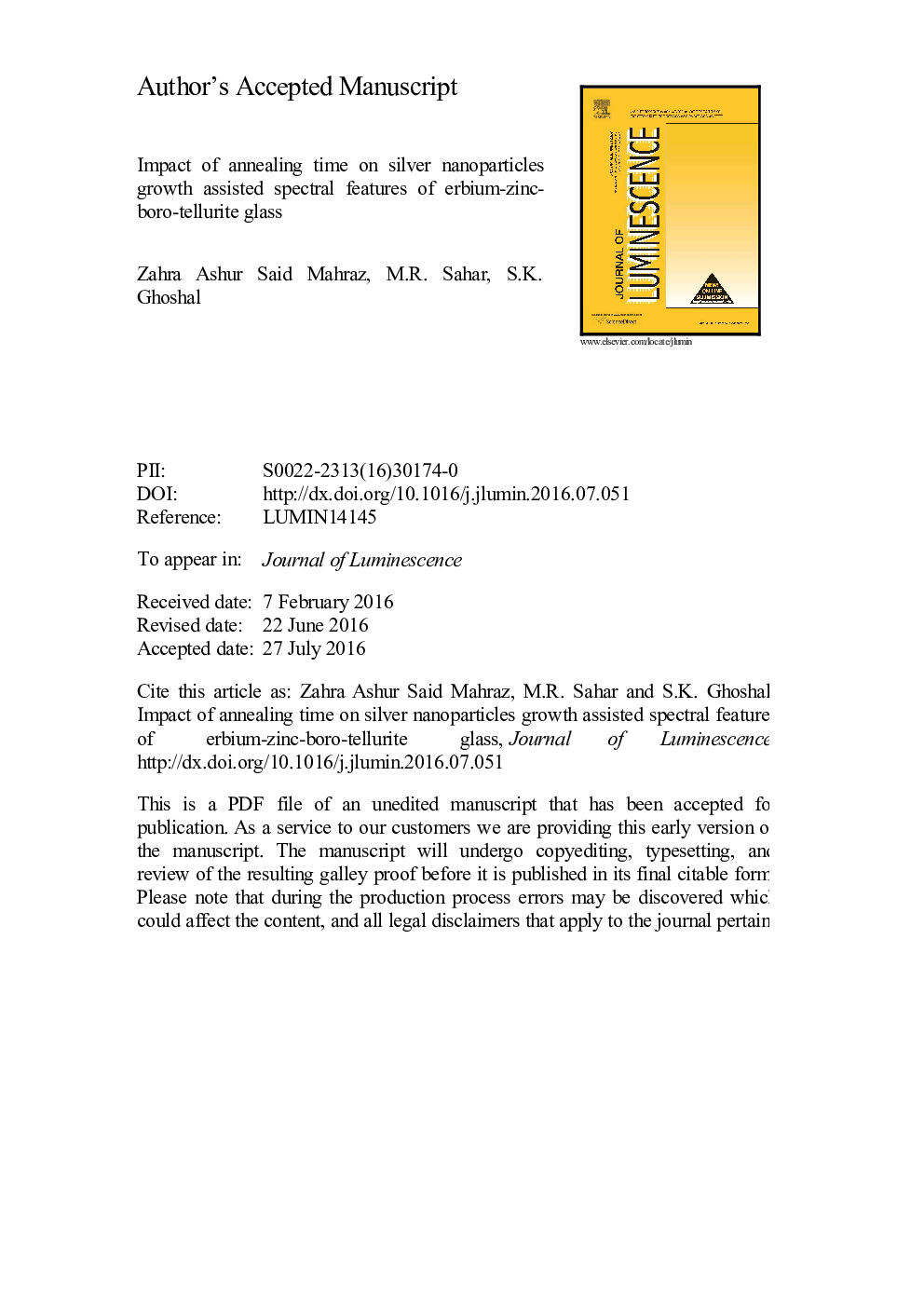| Article ID | Journal | Published Year | Pages | File Type |
|---|---|---|---|---|
| 5398122 | Journal of Luminescence | 2016 | 28 Pages |
Abstract
Modifying the optical response of rare earth doped inorganic glasses by embedding nanoparticles is a never-ending quest. Accurate size and shape control of metal NPs inside the glass matrix through precise heat treatment (annealing) is challenging. We report for the first time, the effects of annealing time on the optical properties of the Er3+-doped zinc-boro-tellurite glasses containing silver NPs. Glasses are prepared using melt-quenching method where the growth of NPs is tuned by varying heat treatment duration. Modifications in physical, optical, and structural parameters are ascribed to the alteration of non-bridging oxygen due to HT. Shrinkage of NPs sizes from 12.8 to 6.6 nm for annealing time beyond 6 hr at 410 °C is ascribed to their diffusion limited growth. Surface plasmon resonance bands at 550 and 580 nm revealed red shift. The intensity parameters related to the radiative transitions within 4fn configuration of Er3+ ion are determined and analyzed using Judd-Ofelt theory. The room temperature emission spectra under 476 nm excitation exhibited three peaks centered at 536, 550 and 630 nm corresponding to the transitions from 2H11/2, 4S3/2 and 4F9/2 excited states to 4I15/2 ground state. Luminescence intensity enhancement (by a factor as much as 4.52) is majorly attributed to the local field effect of Ag NPs and quenching is due to the energy transfer from NPs to Er3+. Present glass compositions are demonstrated to be promising for the development of photonic devices.
Related Topics
Physical Sciences and Engineering
Chemistry
Physical and Theoretical Chemistry
Authors
Zahra Ashur Said Mahraz, M.R. Sahar, S.K. Ghoshal,
